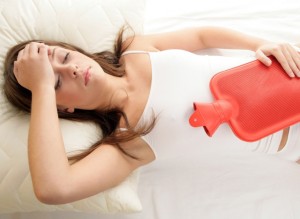Bladder Pain Syndrome / Chronic Pelvic Pain Syndrome
—Specialisation

Signs and Symptoms
CPPS is occurred with perineal or pelvic pain, without the urinary tract gets infected. Pelvic pain is the major and key symptom and there would be no urinary tract infection. Usually these symptoms are experienced for a period of three months. Pain can start mild and may become debilitate and the pain may raidate towards rectum and back. The result of the painful symptom will make the patient to sit uncomfortable.
The other important symptoms are sexual dysfunction and urinary issues.
So, the overall signs and symptoms are the following.
Causes
There are multiple factors that cause the CPPS. The causes can be the following, sometimes can be the combination of them.
Diagnosis
CPPS has no definitive or particular tests conducted to diagnose the condition. Diagnosis is conducted through various tests, but may not be the same for all the patients, suffering from CPPS. It is because there are many varied medical conditions
The basic condition can be tested by performing the following tests.
Treatments Available
CPPS condition is not an easy task to treat. There are multiple causes to result this condition. So, the process of diagnosis gets longer and complex. Eventually, the treatment to treat this condition will also be difficult. There are multi-dimensional treatments and multiple treatments are to be given to get this condition treated.
Psychological treatment
Some kinds of prostatitis may result in obsessive compulsive disorder, anxiety or panic disorder. So, in such condition, psychological treatment is to be done. So, in this kind of treatment, neurological treatment is given to set back the normal psychological condition. As a part of this treatment, aerobic exercises are also suggested. For some of the patients, acupuncture is also suggested, but may not be beneficial for all the patients.
Wise-Anderson Protocol
This is a recently developed protocol, which includes multiple treatments, like medication, psychological therapy and physical therapy. Sometimes, biofeedback physical therapy is also useful as a good treatment.
Pharmacological treatment
This treatment needs many kinds of medications. Though treatment with the antibiotics is possible, it is controversial at this moment.
Surgery
Surgery is one of the options available in treating this condition. However, this treatment is not found beneficial and found ineffective in trials. The name of the surgery that can be possible is TUNA or Transurethral Needle Ablation.
Apart from these medical treatments the sufferer can also perform certain self-help methods to relieve from the pain and syndrome. Self-help can be adopted by following certain management options.
There are many or multi-model management options available. Each of the model must be personalized according to various conditions. The models or methods are to be chosen carefully, based on the general health and case history. The impact of the pain in general and the respective treatment on the sexual function are to be clearly understood and assessed.
There are many conservative methods to follow, like the following.
